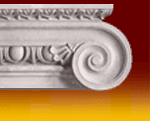FIND A HIDDEN JEWISH HISTORY
LESSON IN
SICILY
(Published in the Canadian
Jewish News,
November 28, 2013)
In
1492 Sicily was part of the Spanish Empire and as a result Jews and
Muslims living there were told to convert or leave. There may have been as many
as 20,000 to 50,000 Jews living in Sicily at the time. There were centered not
only in cities such as Palermo, Messina, Trapani, Siracusa and other cities but
in over 50 towns that had Jewish settlements call Guideccas.
Jews have been in Sicily since the 2nd century B.C.E.
Their initial arrival from Palestine was because Judah Maccabeus formed an
alliance with Rome. In 70 A.C.E. Jews arrived in large numbers as many
prisoners of war after the destruction of the Temple in Jerusalem. In the
earliest times, the largest Jewish communities were in the south especially
Sicily. From the 8th to 15th century Jews survived
through good times and bad under the many occupiers of Sicily. They were active in the silk and cloth trade
and in the practice of medicine. The majority were artisans: weavers, dyers,
cobblers, silver workers, jewelry workers, blacksmiths, and carpenters. There
were also philosophers, doctors and advisors to whoever was in power.
Today unlike in the
north of Italy, Spain and other countries there are no prominent physical signs
from which you could infer that Jews once inhabited the island of Sicily in
large numbers. One can see throughout Sicily signs of the past from the initial
aboriginal people, Phoenician, Greek, Roman, Arab, Norman, Swabians,
Argonese/Spanish and even American and English but no Jewish indication. No
synagogue, ghetto or building could readily indentified as being Jewish. You
would have to be told of a Jewish presence in the past and where it was and the
stories of Jewish communities and individuals. Although there has been nothing
visible to the uninitiated eye, but this is beginning to change.
Sicilians are now making an effort formally and informally to discover
their Jewish past. Numerous hidden objects, hidden places, little centers and
hamlets that were once home to Jews are now being rediscovered. With
Pope Paul reaching out to the Jews by his
visit to Rome's synagogue and the retraction that Jews were the Christ killers
an atmosphere of interest now prevails. Sicilians want to know about their
Jewish past. To this end increasingly scholars, archeologist, communities, and
amateurs are uncovering the Jewish past of Sicily.
If you visit Syracuse
you will find in the main courtyard to the new Bellomo Gallery you can view three
sizeable Jewish tombstones from the 15th century. Fifteen years ago in this
same city when a B&B was being renovated they discovered a Mikvah that is
now thought to be the oldest in Europe. In Palermo signs are posted in Italian,
Hebrew and Arabic indicating the district where the Jews had lived. Also in
Palermo in the Zisa a summer Norman palace you will find a tablet written in
four languages including Hebrew. In Erice's museum you will find a Menorah on a
clay lamp. In 1992 in the town of Salemi issued a proclamation inviting the
Jews who been expelled some 500 years before in 1492 to return. They erected a
marker with Jewish writing to emphasis that Jews were welcome.
In Spain, out of 200,000
Jews 150,000 accepted banishment rather than convert to Christianity. In Sicily
a different story occurred. Scholars believe that most of those leaving were
poorer Jews while the richer Jews not wanting to leave their property and good
lives opted for staying and converted, some turning their back on their Jewish
past and others continuing their Judaism in a hidden manner. In Salemi of the
thirty Jewish families only four families opted to leave, a special case and
not typical. In San Marco 723 out of 728 Jews preferred to leave. In Castronovo
120 of 130. Who knows how many people of Jewish origin walk among Sicilians
without knowing anything about their Jewish ancestors.
When the expulsion edict
came down the Spanish Vice Roy did not want to see the Jewish communities leave
the island. At first he delayed the edict and petitioned the Spanish King and
Queen not to enforce it. He was joined by many of the aristocracy and business
interest in Sicily. It was delayed a year but finally implemented. On January
12th, 1493 the Jews left. There are recorded stories of Christian friends
weeping at the docks as their Jewish friends left by ship to Calabria, Greece
or North Africa. Some even went to Rome, where the Popes surprisingly adopted a
protective attitude towards their new arrivals. Sicilians did not share Spain's
severe damnation of Jews.
The tempo of interest in
Sicily's Jewish past continues to increase with scholarly research and tours
now being offered. Recently in Salemi the province of Trapani a convention was
organized to discuss the historical importance of Jewish communities in Sicily.
The week-long convention, attended by important Catholic and lay personalities,
represented a solid beginning that continues to grow of those things not
destroyed by time and survive in the
documents that gather dust in towns and archives and libraries throughout
Sicily. The Jews in the recent past did return to Sicily and made
a brief return on the eve of WWII and left or were interned. Today there are
Jews once again in Sicily and with some detective work you can contact them in
Palermo and Siracusa in order to attend services. Jewish Tours are also being
offered by Rabbi Barbara Aiello and Bill Genova of Genova Tours.

